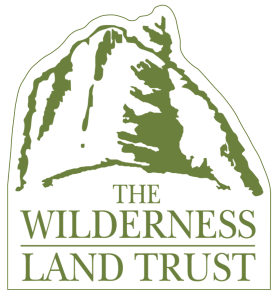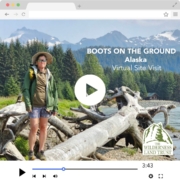More wilderness added to Alaska’s Tongass National Forest
April 5, 2024-
The Wilderness Land Trust recently transferred 5 acres on Wheeler Creek to public ownership in Tongass National Forest, adding it to the Kootznoowoo Wilderness. At over 17 million acres, Tongass National Forest is the nation’s largest national forest, with 35% of it designated as wilderness across 19 wilderness areas.
The Tongass is often called “America’s climate forest” for the carbon it traps and stores. It role in mitigating climate change impacts is unparalleled. The Tongass is also sometimes called “America’s salmon forest’ as its waterways produce a quarter of the West Coast salmon catch, supporting both commercial fishing communities and native subsistence fishing. The Wheeler Creek property has abundant pink salmon and is also important king salmon spawning ground. Kootznoowoo, which means ‘fortress of the bears” in the native Lingít, is on Admiralty Island southwest of Juneau. Aptly named, it has the world’s highest concentration of brown bears in the world – an estimated 1,600 bears, with more than 1 bear per square mile on the island.
At only 5 acres, the Wheeler Creek property is only a drop in the vast landscape of the Tongass National Forest. But with direct boat access to the property, the wilderness inholding was likely to be developed with cabins or even a commercial lodge if not protected. Thanks to our partnership with Southeast Alaska Land Trust, there is one fewer such threat in the heart of this critical habitat.
Interestingly, land on and around the Wheeler Creek property is accreting, or accumulating. As glaciers continue to shrink, the land is rising in response to the reduced weight of the glaciers in a process known as isostatic rebound. As it rises, more land is exposed above the high-water line. When our Wheeler Creek property was recently surveyed it had actually grown (by less than an acre) since its last survey. Across the region this is creating new habitat and exciting conservation opportunities.
The Wilderness Land Trust recently transferred 5 acres on Wheeler Creek to public ownership in Tongass National Forest, adding it to the Kootznoowoo Wilderness. At over 17 million acres, Tongass National Forest is the nation’s largest national forest, with 35% of it designated as wilderness across 19 wilderness areas.
Get more wilderness news delivered to your inbox!
By submitting this form, you are consenting to receive marketing emails from: Wilderness Land Trust. You can revoke your consent to receive emails at any time by using the SafeUnsubscribe® link, found at the bottom of every email. Emails are serviced by Constant Contact

















